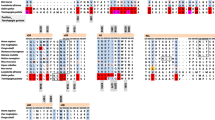Abstract
The “Dorian Gray” senescence of several fish species and a small Australian marsupial mouse (Antechinus), is well documented to be caused by a large increase of cortisol triggered by stress. While cortisol is important in response to trauma, infection, exercise, anxiety, depression and up to 10-fold during surgery, it may also cause involution of the thymus, depression of immune response, tissue damage, fat deposition, confusion and dementia. Excess cortisol is transported by the cortisol binding globulin (CBG) and by albumin. The specific affinity for albumin is lower, but the total binding capacity over 1000-fold higher (42g/L = >200,000ug/L), than CBG (0.037g/L = 250ug/L). With increasing cortisol levels, CBG becomes saturated and a larger proportion of cortisol is carried by albumin. Synthetic glucocorticoids and other hormones are also albumin-bound. In fish and Antechinus the level of albumin is low, perhaps explaining why excess cortisol can cause rapid aging, associated with immune depression. In premature infants, hypoal-buminemia and in the elderly, albumin is decreased and the proportion of free steroid increased during stress. This factor may help explain why the level of serum albumin has emerged in major studies as an important biochemical factor in determining all-cause mortality and morbidity. One area that has shown the possibility of achieving high albumin profiles (55g/L, A/G ratio 2.75), is a hygiene regimen. Hygiene reduces globulin levels, allowing higher albumin levels, while maintaining total protein. We have observed very high albumin profiles (59g/L and an A/G ratio 4.13), associated with the use of a hygiene regime in a few cases.
Similar content being viewed by others
References
Phillips A, Shaper A G, Winchup P H. Association between serum albumin and mortality, Lancet 1989;2:1434-1436.
Corti M C, Guralnik J M, Salive M E, Sorkin J D. Serum albumin level and physical disability as predictors of mortality in older persons JAMA 1994;272:1036-1042.
Kuller L H, Lechner J E, Orchard T J, et al. The relation between serum albumin and risk of coronary heart disease in the multiple risk factor intervention trial, Am J Epidemiol 1991;134:1266-1277.
Gillum R F, Makuc D M. Serum albumin, coronary heart disease and death. Am Heart J 1992;123:507-513.
Rudman D, Feller A G, Nagrah H S, et al. Relation of serum albumin concentration to death rate in nursing home men. J Parent Intern Nutr 1987;11:360-363.
Emptage L A, Blackledge G. Association between serum albumin and mortality from prostate cancer. Lancet 1990;1:482 (letter).
Goldwasser P, Feldman J. Association of serum albumin and mortality risk. J Clin Epidemiol 1997;50:693-703.
Gray G E, Meguid M M. Can total parenteral nutrition reverse hypoalbuminemia in oncology patients? Nutr 1990;6:225-228.
Klein S. The myth of serum albumin as a measure of nutritional status. Gastroenterology 1990;99:1845-1851.
Doweiko J P, Nompleggl D J. The role of albumin in human physiology and pathophysiology, part III: Albumin and disease, J Parent Internal Nutr 1991;15:476-483.
Lunn P G, Austin S. Dietary manipulation of plasma albumin concentration. J Nutr 1983;113:1791-1802.
Peters T. All about albumin San Diego Academic Press. 1996; p.2.
Leme C E, Wajchenberg B L, Leme P R, et al. Cushing syndrome and serum calcium-albumin interactions. Horm Metab Res 1977;9:166.
Robertson O H. Krup M, Cutting B, et al. Physiological changes occurring in the blood of the pacific salmon accompanying sexual maturation and spawning. Endocrinology 1961;68:733-746.
McDonald I R, Lee A K, Bradley A J, et al. Endocrine changes in Dasyurid marsupials with differing mortality patterns. Gen Comp Endocrinology 1981;44:292-301.
Kapikian A Z. The common cold. In Cecil Txtbk Med 18th ed Wyngaarden & Smith. Philadelphia: WB Saunders, 1988; p. 1754.
Gross A, Cutright D E, D'Alessandro S M. Effect of surgical scrub on microbial population under the fingernails. Am J Surg 1979;38:463-467.
Robertson O H. Aging in cold blooded animals. NY MSS Corp 1970 p. 14-27.
Bradley A J, McDonald I. Stress and Mortality in Antechinus. Gen Comp Endocrinology 1980;40:188-200.
Peters T. All about albumin. San Diego, Academic Press 1996; p. 256.
Salive M E, Cornoni-Huntley J, Phillips C, et al. Serum albumin in older persons: Relationship with age and health status. J Clin Epidemiol 1992;45:213-221.
Rothschild M, Orantz M, Schreiber S. Serum albumin. Hepatology 1988;8:385-401.
Peters T. All about albumin. San Diego, Academic Press 1996; p. 198-199.
Todaro G, Green H. Albumin supplemented medium for long term cultivation of cells. Proc Soc Exp Bio Med 1964;116:688-692.
Kobayashi K, Nomura K, Wakasawa S, et al. Quality of life and nutrition (Japanese) Gan To Kagaku Ryoho 1991;18:1031-1038.
Micozzi M S, Albanes D, Stevens R G. Relation of body size and composition to clinical biochemical and hematologic indices in US men and women. Am J Clin Nutr 1989;50:1276-1281.
Stevens R, Blumberg B. Serum Albumin and the Risk of Cancer. In Macronutrients eds. Micozzi M, Moon T. NY, Marcel Dekker 1992; p. 282-291.
Author information
Authors and Affiliations
Rights and permissions
About this article
Cite this article
Seaton, K.E., Micozzi, M. Is Cortisol the Aging Hormone? . Journal of Advancement in Medicine 11, 73–94 (1998). https://doi.org/10.1023/A:1023360416106
Issue Date:
DOI: https://doi.org/10.1023/A:1023360416106




